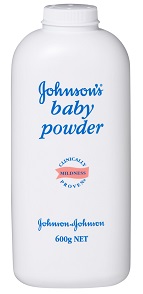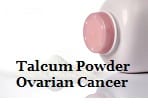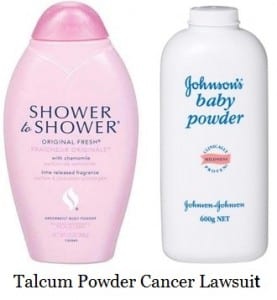 Johnson and Johnson’s Baby Powder is arguably the company’s flagship product. So much of Johnson’s branding the public has been a result of its long, successful ad campaigns to promote its baby powder, and, with that powder, the idea that the ‘consumer’ can trust Johnson & Johnson entirely. If one can trust Johnson & Johnson to powder one’s baby, one can trust the company with anything, right?
Johnson and Johnson’s Baby Powder is arguably the company’s flagship product. So much of Johnson’s branding the public has been a result of its long, successful ad campaigns to promote its baby powder, and, with that powder, the idea that the ‘consumer’ can trust Johnson & Johnson entirely. If one can trust Johnson & Johnson to powder one’s baby, one can trust the company with anything, right?Johnson’s Baby Powder Invention
Frederick Barnett Kilmer, Johnson’s Director of Scientific Affairs (1889 – 1934) was “responsible for JOHNSON’S® Baby Powder,” according to J&J’s web site. Dr. Kilmer, says the site, suggested sending tins of Italian talc to customers “to soothe their skin.” Customers then wrote to tell Johnson, according to J&J, “that the powder also soothed their babies’ bottoms.” (Talk about early branding!)
J&J’s Facts vs. Reality
Johnson’s web site posting of Feb. 24, 2016, titled “The Facts about Talc Safety” is clearly designed to assuage growing public fears about the safety of its talc after three juries have found the company failed to warn about the link between talc and ovarian cancer. Johnson explains in its “Facts” that J&J baby powder is made from “cosmetic talc,” is one of Johnson’s oldest products, and is a “longtime part of baby care rituals.” (Bandwagon fallacy alert) Johnson also claims on its “Facts” post that baby powder is “an essential part” of “makeup and skin care routines.” Is that a fact?
The word “essential,” according to the Merriam-Webster Dictionary, means “extremely important and necessary.” (See: Merriam-Webster/essential)
Baby Powder NOT Essential
By what stretch of the imagination is baby powder or talcum powder “extremely important” or “necessary”? Do people who fail to use talc sicken or perish? What planet does Johnson live on to make such an obviously false claim? Talc and baby powder carry no weight whatsoever in the world of what is “necessary.” How full must a corporate entity be of its own propaganda to believe that its superfluous, unnecessary product is necessary?
J&J has clearly forgotten, or is not familiar with, Rule Number 2 from the classic movie Scarface: “Never get high on your own supply.”
In its “Facts” blog, Johnson also asserts several things, among them:
* JOHNSON’s talc products do not contain asbestos. (Since) the 1970s, talc used in consumer products has been required to be asbestos-free. JOHNSON’S® Baby Powder products contain only U.S. Pharmacopeia (USP) grade talc, which meets the highest quality, purity and compliance standards.
* The safety of talc is based on a long history of safe use and decades of research by independent researchers and scientific review boards.
* The Nurses’ Health Study (2010) and the Women’s Health Initiative Observational Cohort (2014), the only two large-scale prospective studies looking at talc and ovarian cancer, found no causal relationship between talc and ovarian cancer.
What is Talc?
J&J explains on the site that talc is a naturally occurring mineral, chemically referred to as hydrated magnesium silicate. Talc has the formula H2Mg3(SiO3)4 or Mg3Si4O10(OH)2. Talc is a highly stable, chemically inert, odorless white powder [Though some would argue that nothing in this world can be considered entirely inert] and is the world’s softest mineral.
J&J says, “The grade of talc used in cosmetics is of high purity, comparable to that used for pharmaceutical applications, and is free from asbestos and asbestiform fibers. Cosmetic grade talc is only mined from select deposits from certified locations, and milled to relatively large, non-respirable particles size.”
J&J allows Reader Comments
The end of J&J’s “Facts about Talc Safety” piece allows for some readers’ comments, many of which reference the trial cases Johnson has lost regarding talc’s link with ovarian cancer. All three juries which have heard talc-ovarian cancer cases have agreed that J&J failed to warn that its baby powder talc is linked to an increased risk of ovarian cancer.
Some 49 comments follow J&J “Facts about Talc Safety.” To Johnson’s credit, it has allowed publication of not only glowing tributes for J&J, but also comments highly critical of the company’s handling of the talc controversy. Here is a sampling:
Stephan Morin, February 25, 2016:
Just like coorporate America. The ALMIGHTY DOLLAR dictates who live and who dies. Is this what they call collateral damage? At what cost J&J?
Seywonh Smith, February 24, 2016:
Lost my Mom in Aug at 71. She used Baby powder and shower to shower powder for years for feminine hygiene. I do not have BRCA 1 or 2 gene nor did she. She died from Ovarian Cancer, shame on Johnson & Johnson for killing my Mom for a buck.
Looking for alternatives, February 25, 2016:
I’ve been using Johnson and Johnson powder since I was born. I’m terrified now to use the talc powder despite these assurances. (I) feel deeply betrayed by this company which I associated with care and comfort. To read reports that executives knew of a causal link between talc and ovarian cancer as early as the 1980s leaves me saddened and distressed.
Jeannie Whitfield, February 24, 2016
I have been using J&J Baby Talc daily since 1951 non-stop except for surgery (No perfume) and have never had a single problem and yes it’s mainly for my private parts with great success at being hygenic. (There) must be thousands like myself so why not hold a survey about us?
Elizabeth Foley-Saxon, February 29, 2016:
My husband, daughters and I have used Johnson’s baby powder for many, many years. I just learned of the association between talc and ovarian cancer, and I’m SO disappointed. Even if the risk is small, it’s too much risk to assume. Ovarian cancer is the deadliest of gynecological cancers! The moment that this risk became known, J&J should’ve taken action. This is NOT what you did. You put the bottom line of your corporation before the health of your customers. Our bottles of powder have gone into the trash, and I have purchased talc-free powder. Shame on you!
Talc Powder Lawsuits
 Some 1,000 or so lawsuits have been filed in state and federal courts in which women or their surviving family members allege that talc use for feminine hygiene caused ovarian cancer. Ovarian cancer is a rare but deadly form of cancer. In the three court cases so far, all of which have gone against Johnson, juries appear to have been swayed by studies but also by J&J’s internal documents which have revealed that the company knew and was concerned about the link between talc and ovarian cancer back in the early 1980s if not before that time.
Some 1,000 or so lawsuits have been filed in state and federal courts in which women or their surviving family members allege that talc use for feminine hygiene caused ovarian cancer. Ovarian cancer is a rare but deadly form of cancer. In the three court cases so far, all of which have gone against Johnson, juries appear to have been swayed by studies but also by J&J’s internal documents which have revealed that the company knew and was concerned about the link between talc and ovarian cancer back in the early 1980s if not before that time.
Johnson, meanwhile, is sticking to its guns and defending talc as completely safe. The company, at this point, would appear to have little choice but to do so, to deny that there is anything inherently dangerous about talc. If Johnson’s flagship product is shown to cause cancer, and if the majority of the public were to believe that talc is linked with cancer, Johnson’s continued branding of millions of people to continue to sell them billions of dollars in products could be in real danger. At the very least, J&J profits could fall, and that is, of course, the last thing that Johnson wants to see happen.
Related
- Talcum Powder Lawsuit
- J&J knew Talc Ovarian Cancer Risk
- $72 Million Talc Cancer Verdict
- Talcum Powder Verdict: $55 Million
- J&J Company History/Founders

by Matthews & Associates




